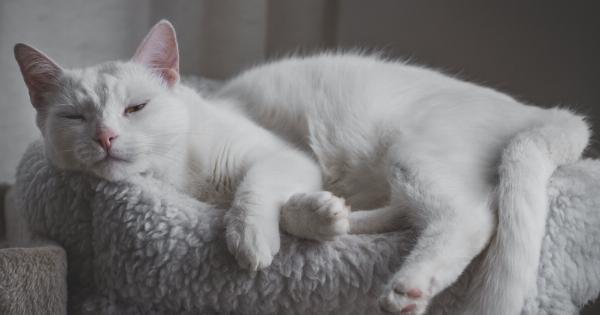Cats are undoubtedly one of the most fascinating creatures on earth. They have been the subject of countless documentaries, books, and movies, yet they never fail to surprise and amaze us.
From their innate grace and agility to their aloof and moody behavior, cats remain a mystery to most of us.
Introducing the Cat
The cat (Felis catus) is a small carnivorous mammal that belongs to the Felidae family. It is native to Africa, Asia, and Europe but has spread worldwide due to its association with humans.
Domestic cats, the most common type of cat, have been selectively bred for over 9,000 years for their companionable and aesthetic qualities. Cats come in a variety of shapes, sizes, and colors, and can weigh between 5 to 20 pounds, depending on breed, personality, and health.
Cats are Smart Creatures
Cats are renowned for their intelligence, curiosity, and independence. Their brains are incredibly complex and are capable of complex problem-solving and strategic thinking.
They have excellent memory skills and can recall details long after an event has occurred. Their visual and auditory senses are exquisite and allow them to detect the slightest changes in their surroundings. Cats also have a strong sense of smell and can pick up scents that are undetectable to humans.
Cats are natural hunters and have an incredible sense of reflexes. Their reflexes are so fast, that they can catch prey in mid-air. These natural traits have made them impressive household members.
They can catch the tiniest of pests and rodents, which makes them the perfect living pest control.
The Moodiness of Cats
Despite their smartness, cats can be extremely moody creatures. One moment they can be purring and cuddling with you, and the next moment they can be scratching and biting you.
They can be aloof and unresponsive or demanding and attention-seeking, depending on their mood. This can sometimes be frustrating for their owners, but it is important to remember that a cat’s behavior is not entirely predictable.
Cats can be moody for many reasons. They may be in pain or discomfort, or they may be feeling stressed or anxious. They may also be feeling bored or under-stimulated.
It is essential to observe your cat’s behavior and body language to understand the reasons behind their moodiness.
Cat’s Behaviors and Body Language
Cats communicate primarily through body language and vocalizations. Understanding their body language can help you identify their moods and needs. The following are some common behaviors and body language of cats.
Purring
Cats purr in different situations. It is generally believed that cats purr when they are happy or content, but they also purr when they are feeling stressed or anxious. Cats may also purr when they are in pain or sick.
Hissing
Cats hiss when they feel threatened or cornered. It is a warning sign to stay away or to leave them alone.
Scratching
Cats scratch to mark their territory and to exercise their paws. They may also scratch when they are feeling anxious or agitated. Providing scratching posts can help reduce the destructive scratching on furniture and other household items.
Meowing
Cats meow for various reasons. They may meow to greet you, to get your attention, to express their needs, or because they are feeling lonely or bored.
Tail Position
The position of the cat’s tail can indicate its mood. A high-held tail indicates the cat is happy or excited, while a low-held tail indicates a more defensive or fearful mood.
A twitching tail indicates the cat is agitated, while a puffed-up tail indicates the cat is feeling threatened or defensive.
Cat Intelligence and Training
Cats are intelligent creatures that can learn new behaviors and tricks. Though they are not as easy to train as dogs, they can still be trained using positive reinforcement such as treats and rewards.
Training can help stimulate their brains and reduce boredom, which is essential for their overall well-being.
Basic commands such as “Come”, “Stay”, and “No” can also help keep them safe and prevent unwanted behaviors such as scratching on furniture or hunting birds although some cat owners have reported success in teaching their cats more complex tricks, such as playing fetch or opening doors.
Cat Breeds and Temperaments
There are over a hundred different breeds of cats, each with their own unique characteristics and personalities. Some breeds, such as the Siamese and the Bengal, are known for their intelligence and active demeanor.
Others, such as the Persian and the Ragdoll, are more relaxed and laid back.
Cats, like people, have different temperaments and personalities. Some cats are naturally shy and introverted, while others are outgoing and bold. It is essential to consider your lifestyle and personality when choosing a cat breed or adopting a cat.
Researching different breeds and talking to breeders and rescuers can help you find the right cat for your personality and lifestyle.
Conclusion
Cats are amazing creatures that continue to fascinate us with their mysterious ways. By understanding their behaviors, body language, and personality, we can forge a deeper bond with them and provide them with the care and attention they need.
They may be moody and unpredictable, but they are also loyal and loving companions that can bring joy and laughter to our lives.






























